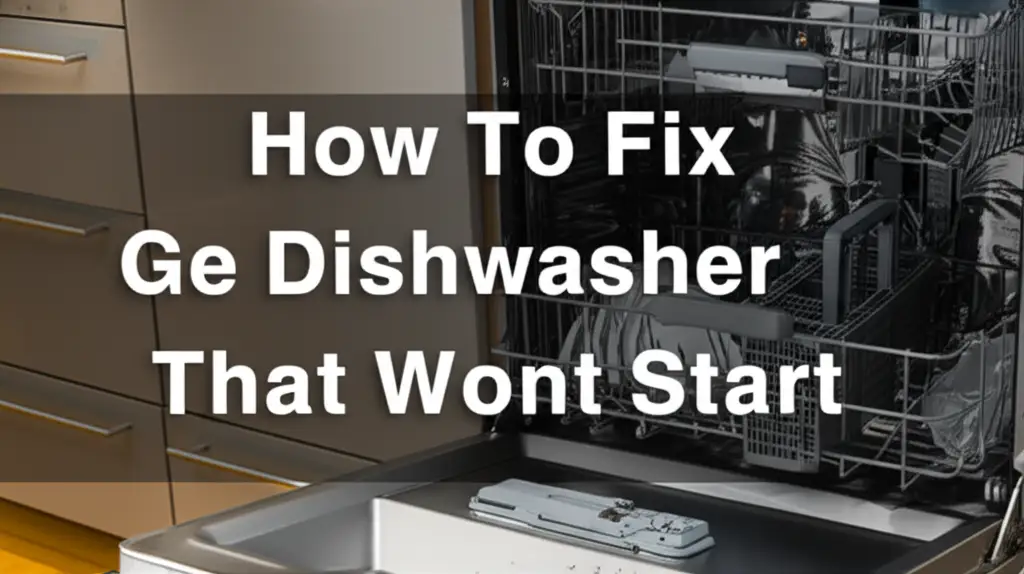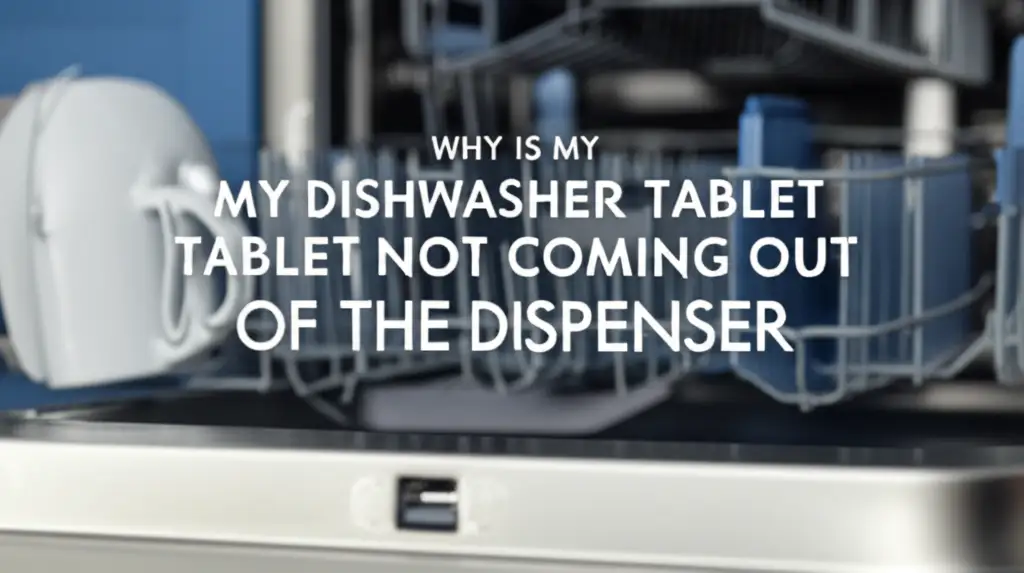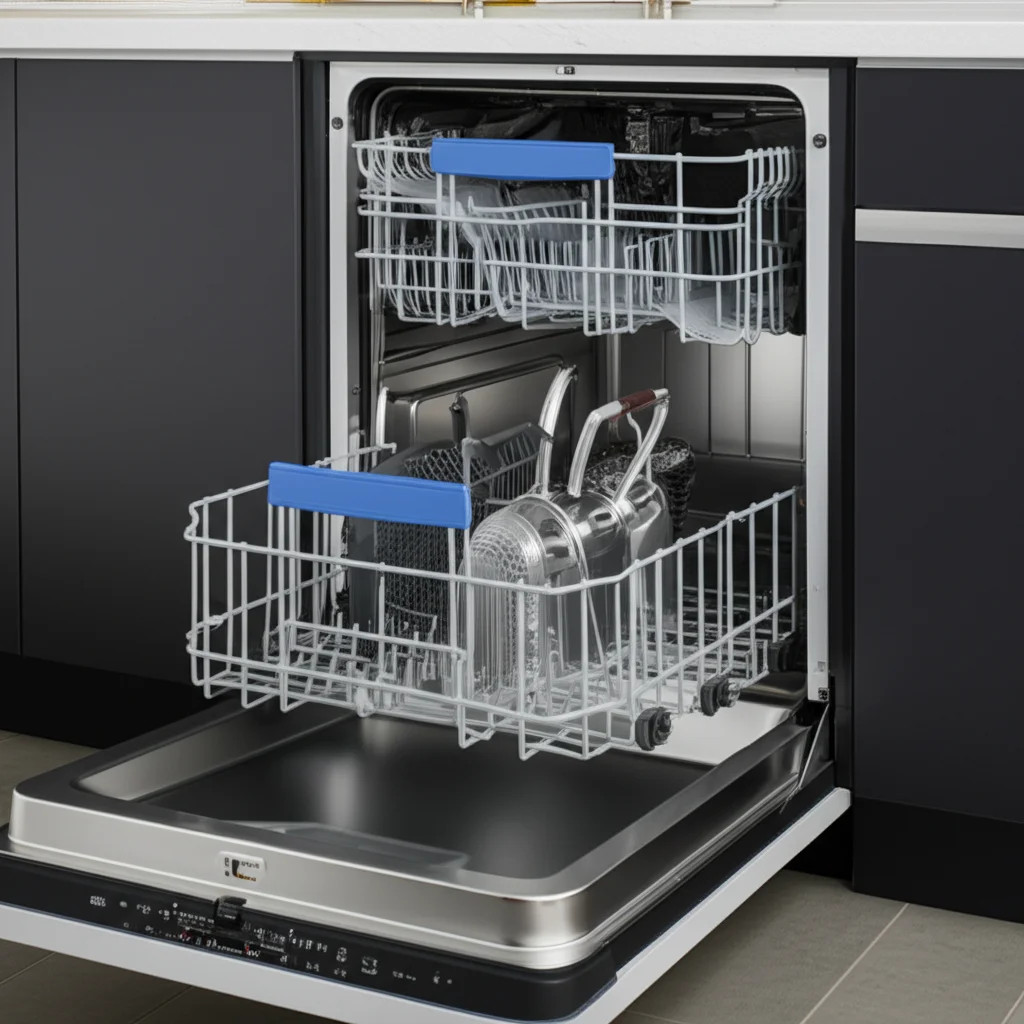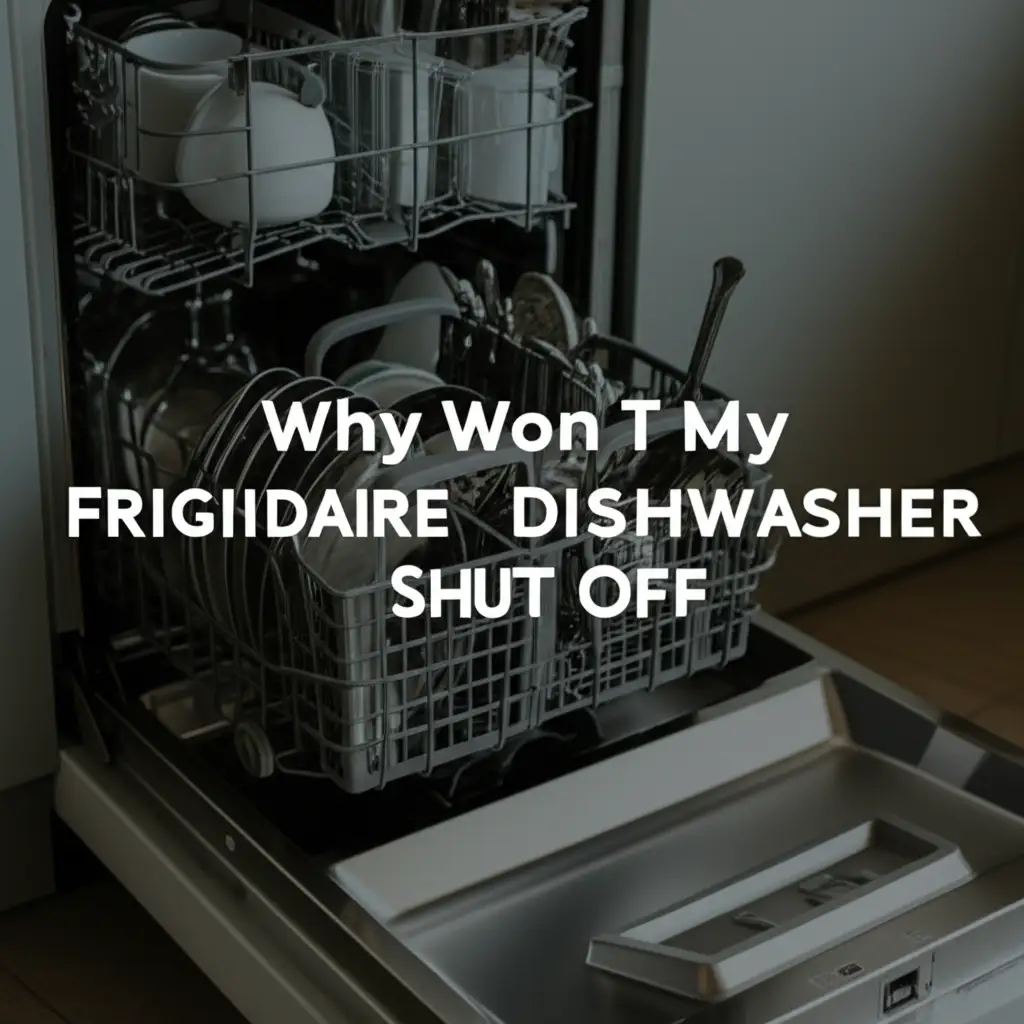· Katria Melrose · Appliance Repair · 21 min read
Why Is My Dishwasher Tablet Dispenser Not Opening
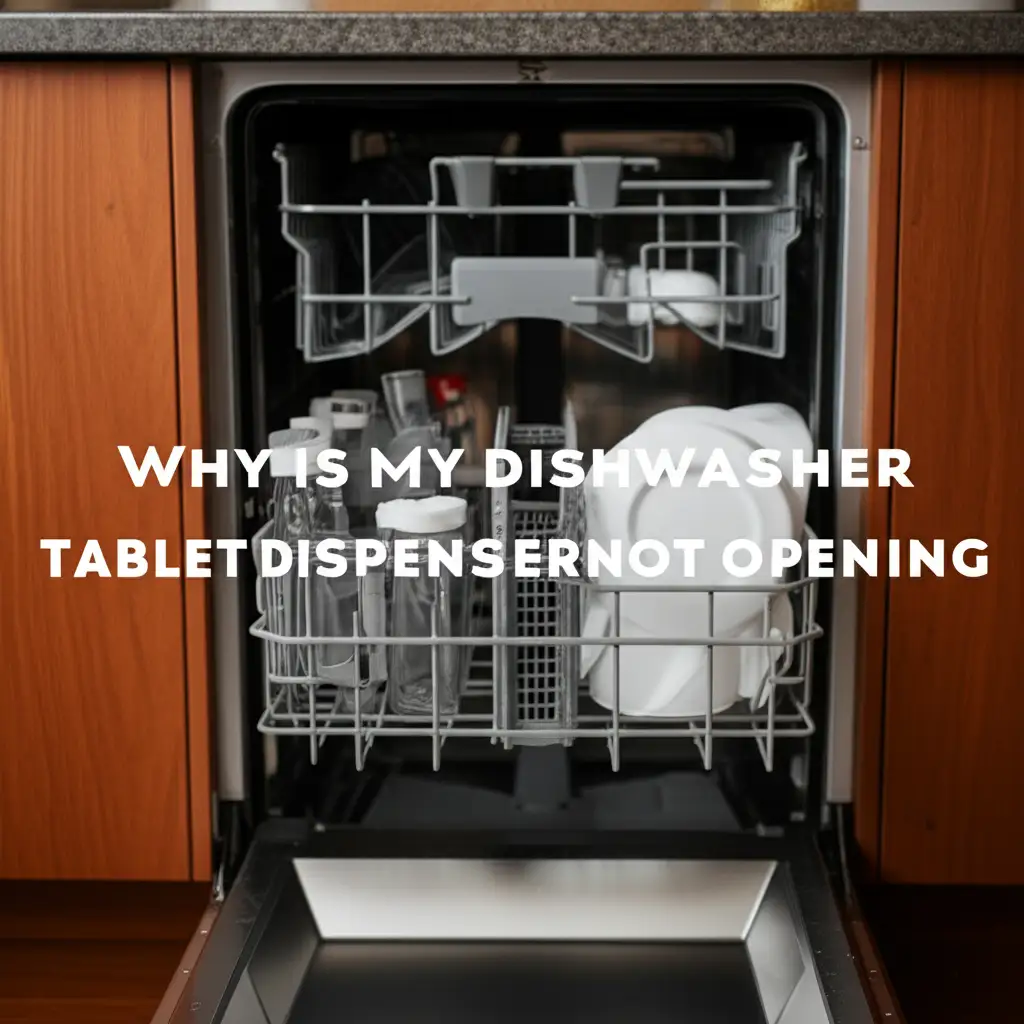
Dishwasher Dispenser Stuck? Common Reasons Why It Won’t Open
You load your dishwasher, add the detergent tablet, and start a wash cycle. Later, you open the door, expecting sparkling clean dishes. Instead, you find the dishwasher tablet still sitting in its dispenser, untouched. This frustrating experience means your dishes are not clean. A common issue is a dishwasher tablet dispenser not opening.
Many people face this problem. It stops your dishwasher from working correctly. We understand how annoying this can be. This guide helps you understand why your dishwasher tablet dispenser fails to open. We will explore common causes. We also offer straightforward solutions to fix it. We will cover everything from simple obstructions to more complex mechanical or electrical issues. By the end, you will know how to get your dishwasher back to doing its job.
Takeaway
A dishwasher tablet dispenser failing to open often points to several common issues. Here are the main points to consider:
- Check for Physical Obstructions: Ensure no dishes block the dispenser door.
- Inspect Mechanical Components: Look for issues with the latch, spring, or hinges.
- Assess Electrical Parts: Test the dispenser solenoid and check wiring connections.
- Review Detergent Conditions: Use fresh, non-clumped tablets. Ensure proper storage.
- Verify Door Latch Function: A faulty door latch can prevent the cycle from starting correctly.
A dishwasher tablet dispenser fails to open due to physical obstructions, mechanical component issues, electrical faults like a bad solenoid, detergent clumping, or an improperly latched door. Troubleshooting these common areas helps restore proper function.
Dishwasher Dispenser Stuck? Common Obstructions and Their Fixes
It is a common scenario: you run your dishwasher, but the tablet never releases. One of the simplest reasons for a dishwasher tablet dispenser not opening is a physical obstruction. We often load our dishwashers quickly. Sometimes, a rogue dish or utensil blocks the dispenser door. This blockage prevents the door from flipping open during the wash cycle.
This issue is easy to check. Make sure no large plates or tall bowls sit directly in front of the dispenser. Items on the lower rack can also lean against the dispenser. Even a long spoon or a serving utensil on the top rack might interfere. Always check the dishwasher’s interior layout before starting a cycle.
How to Prevent Obstructions
You can avoid this problem with careful loading. Place larger items in specific areas. Keep items away from the dispenser door. This simple step can save you time and frustration. It also ensures your detergent releases properly every time.
- Load Large Items Carefully: Position plates and bowls in the lower rack. Ensure they do not stick out too far.
- Mind Upper Rack Items: Check that tall glasses or utensils do not hang below the upper rack’s edge. They could hit the dispenser.
- Test the Door: Close the dishwasher door. Then, manually open the dispenser door. Make sure it swings freely. Do this before you start a wash cycle.
Food residue can also be an obstruction. Sometimes, small food particles or grease build up around the dispenser mechanism. This grime can cause the dispenser door to stick. The door may not open fully. This sticky residue prevents the release of the tablet.
Cleaning the Dispenser Area
Regular cleaning of your dispenser is important. Use a damp cloth to wipe down the dispenser compartment. Remove any visible food bits or detergent residue. A small brush can help reach tight spots. This practice keeps the dispenser clean. It allows the door to move freely.
- Wipe Down the Interior: Use a cloth with warm, soapy water. Clean the dispenser’s inner surfaces.
- Focus on the Latch: Pay attention to the latch mechanism. Food bits can get stuck there.
- Rinse Aid Compartment: Clean this area too. Sometimes, spills from rinse aid can make the surface sticky.
We often overlook these small details. However, checking for obstructions first saves you from deeper troubleshooting. It ensures your dishwasher works efficiently. This step takes only a few seconds. It prevents repeated washes due to unreleased detergent. A clear path for the dispenser door is essential for a clean wash.
Understanding Mechanical Failures in Your Dishwasher Dispenser
When your dishwasher tablet dispenser is not opening, the problem might be mechanical. The dispenser has moving parts. These parts can wear out or break over time. Common mechanical culprits include the dispenser door latch, its spring, or even the hinge points. Each component plays a vital role in releasing the tablet. If any of these fail, the door stays shut.
The dispenser door latch is the most common mechanical part to fail. This small plastic or metal piece holds the door closed. During the wash cycle, a signal triggers this latch to release. If the latch is broken, jammed, or worn, it might not disengage. This keeps the door firmly shut. You might hear a click but see no movement. This means the latch is attempting to release but cannot.
Inspecting the Latch and Spring
Check the latch visually. Look for any cracks or deformation. Sometimes, a small piece of plastic breaks off. This prevents the latch from moving correctly. The spring connected to the door provides the force to push it open. If this spring is weak, rusted, or dislodged, the door may not pop open fully. It might open just a crack, or not at all. You can gently test the door’s springiness by hand. It should snap open easily when manually released.
- Visual Inspection: Open your dishwasher door. Locate the detergent dispenser. Look closely at the latch and the area around the door hinge.
- Test Latch Movement: Gently try to push the latch in and out. Does it move smoothly? Is there any resistance or grinding?
- Check Spring Tension: Manually open the dispenser door. It should spring open quickly. If it opens slowly or needs a push, the spring might be weak.
The hinges connecting the dispenser door to the main compartment can also cause issues. Over time, these plastic hinges can crack. They can become stiff with detergent residue. This stiffness prevents smooth operation. A broken hinge means the door cannot pivot correctly. It might get stuck or not align properly for release. If your dispenser door seems loose or uneven, damaged hinges could be the reason.
Some dishwasher dispensers use a small motor or solenoid plunger to operate the latch. While primarily electrical, mechanical issues can affect this interaction. The plunger might be sticking. It could be due to grime or corrosion. This sticky plunger prevents it from pushing the latch mechanism. A careful cleaning of this area can sometimes resolve the issue.
Repairing Mechanical Issues
Repairing these mechanical parts often involves replacing the faulty component. You can find replacement dispenser assemblies for most dishwasher brands. If you find a broken latch or a weak spring, consider ordering a new part. Replacing the entire dispenser unit is usually straightforward. It involves removing a few screws and disconnecting any wires. Always disconnect power to the dishwasher first.
For specific brands, mechanical issues might differ slightly. For example, a Whirlpool dishwasher soap dispenser not opening might have a common latch failure point. Similarly, a KitchenAid dishwasher soap dispenser not opening might have unique hinge designs prone to wear. Understanding your specific model can help pinpoint the exact mechanical part needing attention. Addressing these mechanical failures ensures the dispenser door opens reliably, leading to cleaner dishes with every cycle.
Electrical Glitches: When Your Dispenser Solenoid Fails
When your dishwasher tablet dispenser is not opening, the problem might stem from an electrical component. Modern dishwashers rely on electrical signals to trigger the dispenser. The solenoid is the primary electrical part responsible for opening the detergent dispenser door. This small electromagnetic device receives a signal from the dishwasher’s control board. It then pulls a plunger, which releases the dispenser latch. If the solenoid fails, the dispenser will not open.
A faulty solenoid is a common reason for non-opening dispensers. The solenoid coil can burn out. Its plunger can become jammed or corroded. When this happens, the electrical signal cannot translate into mechanical movement. You might hear the dishwasher running. However, the distinct click of the dispenser opening will be absent. The tablet remains inside.
Testing the Solenoid
Testing a solenoid requires a multimeter. First, always disconnect the dishwasher from power. Locate the dispenser solenoid. It is usually attached to the dispenser assembly. Disconnect its wires. Set your multimeter to read ohms. Touch the multimeter probes to the solenoid’s terminals. A healthy solenoid will show a specific resistance reading. This reading varies by model, but typically falls within a certain range (e.g., 50-100 ohms). If the multimeter reads zero or an open circuit (infinity), the solenoid is likely faulty. It needs replacement.
- Safety First: Unplug the dishwasher or turn off its circuit breaker.
- Access the Solenoid: You may need to remove the inner door panel or the entire dispenser assembly to reach it.
- Use a Multimeter: Test for continuity or resistance across the solenoid terminals. Compare the reading to your dishwasher’s service manual specifications.
Beyond the solenoid, wiring issues can prevent the dispenser from receiving power. A loose connection, a frayed wire, or a damaged wire harness can interrupt the electrical signal. Rodents can also chew through wires. Inspect all wires leading to the dispenser and solenoid. Look for any visible damage. Ensure all connections are secure. Sometimes, simply re-seating a loose wire can fix the problem.
Control Board Malfunction
The control board is the brain of your dishwasher. It sends the signal to the solenoid at the correct time during the wash cycle. If the control board is faulty, it might not send this signal. This can happen due to power surges, age, or manufacturing defects. Diagnosing a control board issue is more complex. It often requires advanced testing or replacement. If the solenoid and wiring are fine, but the dispenser still does not open, the control board might be the culprit.
- Check for Error Codes: Some modern dishwashers display error codes indicating control board issues. Consult your appliance manual.
- Professional Diagnosis: Control board replacement is usually a job for a qualified technician. It involves specific programming and safety precautions.
It is rare, but sometimes a thermal fuse connected to the dispenser circuit can trip. This fuse acts as a safety mechanism. It protects the component from overheating. If it trips, it cuts power to the dispenser. Replacing a tripped thermal fuse can resolve the issue. However, address the underlying cause of overheating if one exists.
Understanding these electrical components is key. When your dishwasher tablet dispenser is not opening due to an electrical problem, careful diagnosis helps. Replacing a faulty solenoid or repairing damaged wiring can restore your dishwasher’s function. Always remember to prioritize safety by disconnecting power before any electrical troubleshooting or repair.
Detergent and Water Chemistry: Impact on Dispenser Performance
The type of detergent you use and your home’s water chemistry greatly impact how your dishwasher tablet dispenser performs. If your dishwasher tablet dispenser is not opening, or if the tablet simply isn’t dissolving, it might be due to issues with your detergent or water. This is a subtle yet significant factor.
Detergent Quality and Storage: Not all dishwasher tablets are created equal. Low-quality tablets might be too large for your dispenser. They can get stuck. Expired or improperly stored tablets can also be problematic. Detergent tablets are sensitive to moisture. If stored in a humid environment, they can clump together. This clumping makes the tablet swell. A swollen tablet cannot fit through the dispenser opening. It also prevents the door from swinging freely.
- Proper Storage: Always store dishwasher tablets in a cool, dry place. Keep them in their original airtight packaging.
- Check Expiry Dates: Use tablets before their expiry date. Old tablets may lose their effectiveness and become prone to clumping.
- Correct Size: Ensure the tablet size fits your specific dispenser. Some compact dispensers require smaller tablets.
Using too much powdered detergent, if you switch types, can also lead to issues. Excess powder might spill into the dispenser’s moving parts. It creates a sticky residue. This residue can gum up the latch and hinge mechanism. It acts as a physical barrier. This prevents the dispenser from opening fully.
Water Temperature: Dishwashers need hot water to activate detergent enzymes. Hot water helps dissolve the tablet properly. If the water entering your dishwasher is not hot enough, the tablet may not dissolve. Even if the dispenser opens, the tablet might just sit there partially dissolved. This leaves a sticky mess. The optimal water temperature for dishwashers is usually around 120-140°F (49-60°C).
- Check Water Heater Settings: Ensure your home’s water heater is set to an appropriate temperature.
- Run Hot Water: Before starting the dishwasher, run hot water at your kitchen sink for a minute. This purges cold water from the supply line. It ensures the dishwasher gets hot water from the start.
Hard Water: Hard water contains high levels of minerals like calcium and magnesium. These minerals can leave deposits inside your dishwasher. They accumulate on heating elements, spray arms, and even inside the detergent dispenser. Over time, mineral buildup can create a crusty layer. This layer can impede the dispenser door’s movement. It makes the dispenser sticky. This mineral buildup prevents the tablet from releasing.
Mitigating Hard Water Effects
If you have hard water, regular maintenance is crucial. Use dishwasher cleaner tablets or white vinegar periodically. These products help dissolve mineral deposits. They keep your dishwasher’s components, including the dispenser, clean and free of buildup.
- Dishwasher Cleaners: Use a specialized dishwasher cleaner once a month. Follow the product instructions.
- White Vinegar Rinse: Place a cup of white vinegar on the bottom rack. Run an empty hot water cycle. This helps descale the interior.
- Rinse Aid: Using rinse aid is especially important with hard water. It helps water sheet off dishes. This reduces water spots and mineral buildup inside the machine.
Sometimes, if your dishwasher tablet is not coming out of the dispenser, it might be due to moisture. Moisture can cause the tablet to stick to the dispenser wall even if it opens. This is often related to the tablet type or humidity. By addressing detergent storage, water temperature, and hard water issues, you can significantly improve your dishwasher dispenser’s reliability. These factors are critical for both dispenser function and overall wash performance.
Door Latch and Rinsing Aid Issues Affecting Dispenser Release
It might seem unrelated, but a problem with your dishwasher’s main door latch can indirectly cause your dishwasher tablet dispenser to not open. Similarly, issues with the rinse aid dispenser can sometimes complicate matters. Understanding these connections helps in troubleshooting.
The Main Door Latch: For safety and proper operation, dishwashers have a door latch mechanism. This latch ensures the door is securely closed before the wash cycle begins. If the door is not fully latched, the dishwasher’s control system will prevent the cycle from starting. It will not power components like the dispenser solenoid. Even if the dispenser itself is perfectly fine, it will not receive the signal to open.
You might hear a faint humming, or the dishwasher might seem to start but then quickly stop. Some dishwashers will flash error codes. Others simply refuse to do anything. Always double-check that the dishwasher door clicks firmly into place. Ensure it is not blocked by protruding dishes. A worn or faulty main door latch assembly also needs attention. If the latch is broken, it won’t signal the dishwasher that the door is closed.
- Check Door Alignment: Ensure the door aligns correctly with the latch strike plate on the dishwasher frame.
- Inspect Latch Mechanism: Look for any visible damage to the latch on the door or the strike on the machine.
- Listen for the Click: You should hear a clear click when closing the door. If not, something might be wrong with the latch.
Rinse Aid Dispenser Complications
The rinse aid dispenser is a separate compartment. It releases a small amount of rinse aid during the final rinse cycle. While it is not directly linked to the detergent dispenser’s opening mechanism, problems with it can affect overall detergent effectiveness. A clogged or faulty rinse aid dispenser might lead to water spots. These spots can make the dishwasher interior appear dirty. This can sometimes be confused with detergent not dissolving properly.
More critically, if excess rinse aid spills or leaks, it can create a sticky film. This film can get onto the detergent dispenser’s moving parts. This stickiness can impede the smooth operation of the detergent dispenser door. It might cause the door to stick. This prevents it from opening completely.
- Clean Rinse Aid Compartment: Regularly clean the rinse aid dispenser. Wipe up any spills immediately.
- Check for Leaks: Inspect the rinse aid dispenser for cracks or signs of leakage. A faulty seal can cause leaks.
- Proper Filling: Do not overfill the rinse aid compartment. This prevents spills.
For specific models like a KitchenAid, knowing how to empty the rinse aid dispenser on a KitchenAid dishwasher might be useful for cleaning or maintenance. Similarly, understanding how to open the Frigidaire dishwasher rinse aid dispenser helps in maintaining that component. While rinse aid issues are less direct causes of a non-opening detergent dispenser, their impact on stickiness or overall wash quality is noteworthy. Ensuring both the main door latch and the rinse aid dispenser are in good working order contributes to your dishwasher’s efficient operation and ensures your detergent tablet releases as intended.
Advanced Troubleshooting for Persistent Dispenser Problems
Sometimes, simple fixes do not resolve the issue of a dishwasher tablet dispenser not opening. When you have checked for obstructions, mechanical damage, and obvious electrical faults, it is time for advanced troubleshooting. These steps might involve resetting the appliance or considering professional repair.
Resetting Your Dishwasher: Like many modern appliances, dishwashers can sometimes benefit from a hard reset. This clears any temporary glitches in the control board’s memory. It can sometimes resolve minor electrical communication issues. The process is simple.
- Unplug the Dishwasher: Locate the dishwasher’s power cord. Pull it from the wall outlet.
- Wait: Leave it unplugged for at least 5-10 minutes. This allows the control board to fully discharge.
- Plug Back In: Plug the dishwasher back into the outlet.
- Test: Run a short cycle. Check if the dispenser opens.
If your dishwasher is hardwired, you need to trip its circuit breaker at your home’s electrical panel. Turn the breaker off, wait for 5-10 minutes, then turn it back on. This achieves the same result as unplugging. This method can sometimes fix intermittent electrical faults that prevent the dispenser from firing.
Inspecting the Control Board
If the reset does not work, and you have ruled out the solenoid, the control board itself might be failing. The control board sends the precise electrical signal to the dispenser solenoid at the correct time during the wash cycle. If its internal components are damaged, or if its programming is corrupted, it might not send this signal. Visible signs of a faulty control board include burnt components, scorch marks, or bulging capacitors. However, sometimes there are no visible signs.
- Visual Check: With the power off, open the control panel. Look at the control board. Are there any burnt spots? Any odd smells?
- Component Testing: Testing individual components on a control board requires specialized tools and expertise. This is usually beyond basic DIY repair.
- Professional Help: If you suspect the control board, contact a qualified appliance technician. Control boards are expensive. Incorrect diagnosis can lead to wasted money.
Manual Override/Bypass Test: In some dishwasher models, you can manually trigger the dispenser release. This test helps confirm if the mechanical parts of the dispenser are working. If you can manually open it, the issue is likely electrical (solenoid, wiring, or control board). Consult your dishwasher’s service manual for specific instructions on how to do this. For many models, applying 120V directly to the solenoid terminals (with extreme caution and proper safety measures) can test its functionality. This is a high-risk procedure for DIYers.
When to Call a Professional
Knowing when to call a professional technician is important. If you have tried all the troubleshooting steps and the dishwasher tablet dispenser is still not opening, it is time to seek expert help. Complex electrical issues, control board problems, or internal mechanical failures that are hard to access often require specialized tools and training.
- Safety Concerns: If you are uncomfortable working with electricity or disassembling major parts of your dishwasher.
- Lack of Tools/Knowledge: For complex diagnostics or part replacement.
- Persistent Problem: After trying all common fixes without success.
- Warranty: If your dishwasher is still under warranty, attempting repairs yourself might void it. Check your warranty terms.
A professional can accurately diagnose the problem. They can replace faulty parts efficiently and safely. This ensures your dishwasher returns to full working order. While it incurs a cost, it prevents further damage. It ensures peace of mind. Taking these advanced troubleshooting steps helps narrow down the problem. It points you towards the best solution for your stubbornly closed dispenser.
Preventing Dispenser Problems: Maintenance Tips
Preventing your dishwasher tablet dispenser from not opening is often simpler than fixing it. Regular maintenance and proper use habits can significantly extend the life and reliability of your dispenser. My goal is to keep your dishwasher running smoothly. These tips help avoid common issues.
Proper Loading Habits: This is fundamental. We often rush when loading the dishwasher. But thoughtful placement of dishes prevents physical obstructions. Ensure nothing blocks the dispenser door’s path.
- No Tall Items in Front: Place tall plates, serving dishes, or large bowls so they do not obstruct the dispenser.
- Mind Utensils: Make sure long utensils do not dangle below the upper rack. They can prevent the dispenser from opening.
- Test Clearance: Before starting a cycle, gently push the dispenser door open manually. Make sure it swings freely without hitting any dishes. This quick check takes seconds. It saves a full wash cycle if something is blocking it.
Detergent Management: How you handle your detergent matters. Using the right type and storing it correctly prevents many dispenser problems.
- Use Quality Tablets: Choose high-quality dishwasher tablets. They dissolve better and leave less residue.
- Store in Dry Conditions: Always keep dishwasher tablets in an airtight container. Store them in a cool, dry place. Humidity causes tablets to swell or stick. This makes them unable to fit or release from the dispenser.
- Avoid Overdosing: If using powder or gel, do not overfill the dispenser. Excess detergent can clump and jam the mechanism.
Regular Cleaning and Maintenance
Regular cleaning is vital for all dishwasher components. The dispenser area specifically needs attention. Food particles and detergent residue can build up. This accumulation gums up the dispenser’s moving parts.
- Wipe Down Dispenser: After each wash cycle, quickly wipe the dispenser. Use a damp cloth to remove any leftover detergent or food bits.
- Deep Clean Dispenser: Periodically, perhaps monthly, give the dispenser a more thorough clean. Use an old toothbrush to scrub away stubborn residue around the latch and hinges.
- Run Empty Cycle with Cleaner: Use a specialized dishwasher cleaner once every few months. Place it in the main detergent dispenser or at the bottom of the dishwasher. This helps remove mineral buildup and grease from all internal parts.
- Use White Vinegar: Alternatively, place a cup of white vinegar on the bottom rack. Run an empty hot water cycle. Vinegar is excellent for descaling and removing odors.
Water Softener/Rinse Aid Use: If you live in a hard water area, mineral buildup is a major concern. These deposits can seize up dispenser components.
- Consider a Water Softener: If hard water is severe, a whole-house water softener can prevent mineral buildup in all appliances.
- Use Rinse Aid: Always use rinse aid, especially with hard water. It helps water sheet off dishes. This reduces mineral spotting and prevents residue accumulation inside the dishwasher, including the dispenser. Ensure the rinse aid dispenser is always filled and clean.
Timely Repairs: Do not ignore small issues. If the dispenser door feels sticky, or the latch seems a bit loose, address it early. Minor issues can escalate into major problems if left unaddressed. Regular checks for wear and tear can save you from a complete dispenser failure.
By implementing these simple maintenance tips, you can significantly reduce the chances of your dishwasher tablet dispenser not opening. A well-maintained dishwasher works more efficiently. It provides consistently clean dishes, cycle after cycle.
FAQ Section
Q1: Can I put the dishwasher tablet in the bottom of the machine if the dispenser is broken?
A1: Yes, you can place the dishwasher tablet directly in the bottom of the machine. This is a temporary solution. The tablet will dissolve, but usually earlier in the cycle than ideal. This can lead to less effective cleaning, especially for heavily soiled dishes, as the detergent may wash away before the main cleaning phase.
Q2: Why is my dishwasher running but the tablet dispenser still won’t open?
A2: If your dishwasher runs but the dispenser does not open, the problem is likely specific to the dispenser mechanism. Common causes include a failed dispenser solenoid (electrical part), a jammed or broken mechanical latch, or a faulty control board not sending the signal to open the dispenser. Check for physical obstructions first.
Q3: How do I test the dishwasher dispenser solenoid?
A3: To test the solenoid, first unplug the dishwasher for safety. Locate the dispenser solenoid, usually part of the dispenser assembly. Disconnect its wires. Use a multimeter set to ohms to measure resistance across the solenoid terminals. A reading of zero or infinite ohms indicates a faulty solenoid that needs replacement.
Q4: How often should I clean my dishwasher tablet dispenser?
A4: You should wipe
- dishwasher repair
- appliance troubleshooting
- dishwasher dispenser
- tablet dispenser not opening
- dishwasher problems


